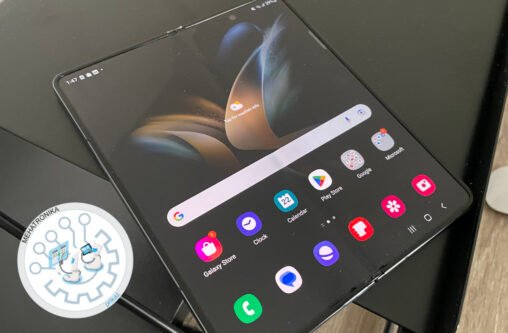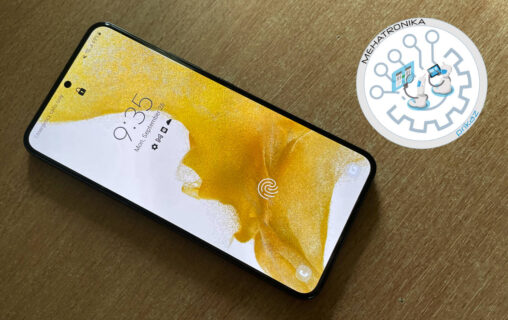Samsung

The Galaxy Z Fold 4 is Samsung’s best and latest. It’s their absolute flagship, packing all the tech they’ve got. It’s impressive, and it’s got the highest productivity potential of all the mobiles on the market right now, but its near-$2k price tag puts it in the same ballpark as much more powerful traditional phone-and-laptop combinations.

Foldable phones have been all the hype in recent years. Strictly speaking, these are not a new idea. The first concept foldable phone was the Nokia Morph – which never saw a functional prototype developed. In the early 2010s, Samsung and LG – the forerunners of OLED tech – developed functional displays which could handle some bending. While the early-to-mid 2010s were filled with prototype foldable devices, 2018 was the year when the first commercially available foldable hit the market – the Royole FlexPai.
What the FlexPai did was prove to the world that there was a place for a foldable phone in the consumer market – but what it did not achieve was perfection. The screen was fragile and easily damaged, the specs weren’t anything to write home about and the hinge – the lifeblood of any foldable – proved to be a much bigger issue than anticipated.
A hinge is an obvious ingress point for dust and water – so early models often had serious durability issues. Part of the smartphone’s ubiquity lies in the simplicity of its design – no motors, bearings or other mechanical moving parts which can easily break or malfunction. This is exactly why models with pop-out front cameras are traditionally seen as unreliable and why many curious ideas like the LG Wing never entered the mainstream.
While Royole had introduced their first foldable a year before Samsung had its first contender – Samsung’s 2019 Fold was the first true noteworthy device of the sort. Nevertheless, early review units had issues with the protective foil on the screen, as well as numerous reports of gritty hinges. Also, the crease. The crease is simply a part of life for foldable owners. This line naturally occurs on all inwards-bending displays. Samsung engineered their hinges to bend the displays at rather sharp angles (which is good), which sadly does increase the prominence of this line, visible at every angle except a straight-on view of the screen.

Samsung’s entry-level flagship phones are often overlooked due to the more apt Plus and Ultra models. However, year after year, these standard S-series models keep offering great performance and many of the exciting new features expected from the next generation flagship. That being said – the death of the beloved Galaxy Note lineup and its merger with the Galaxy S Ultra lineup did limit some of the most unique features – like the S Pen to the highest-end flagships the company makes.
While models like the Galaxy S21 FE (or even the mid-range Galaxy A73) are focused on bringing older higher-end specs for relatively low prices, entry-level flagships are all about top-notch core specs, but without all the non-essential bells and whistles. At its starting $749 price, it’s an intriguing choice for those searching for a sub-$1000 Android flagship.
At this price range, there are several other options, however – including the Asus Zenfone 9 and the Pixel 6, retailing for slightly lower prices, as well as the OnePlus 10T, usually going for a bit more. We can’t go without noting the iPhone 14 as well – retailing for $799. The competition in this price range is stiff – so the Galaxy S22 has to put up a valiant effort.
And the looks definitely don’t disappoint. While visually reminiscent of the S21 FE, the S22 features a Gorilla Glass Victus Plus screen and back (no more plastic backs!) and an aluminium frame. This frame feels almost like steel, and the entire build feels substantial in the hand. There’s a good selection of colours – Phantom Black, Phantom White, Green and Pink Gold. Exclusively through Samsung, there’s also a choice of Graphite, Cream, Sky Blue and Violet. These exclusive colours harken back to the S21 design with the camera bump being a discrete colour. In late Q2 2022, the S22 also dropped in a Bora Purple – the same striking hue available on the company’s new foldables.

Following the success of the Galaxy S20 FE and the general popularity of the Galaxy S21 series, Samsung has once again taken to producing a new FE-series device. These “Fan Edition” phones usually come later in a series’ life cycle and pack a punch at a mid-range price. And the name? It stems from Samsung’s claim that feedback is collected from users to create the best compromise between features and price possible – with the fan-favorite features making the cut.
In theory, this is a similar concept to Apple’s iPhone SE lineup – offering flagship-level performance with a lower price-tag while sacrificing some non-essential features. Unlike the SE, however, the S21 FE doesn’t sacrifice its design or display.
In fact – the S21 FE uses a 6.4-inch Dynamic AMOLED 2X (marketing talk for an AMOLED screen with HDR10+ support and better color accuracy) – quite similar to the one that the S21 uses. This means its screen outperforms older Samsung devices and is a significant step up, even for people coming from mainline S20 models.
Oddly enough, Samsung tends to use two different chipsets in its flagship phones depending on the region the unit was sold. Usually, their own in-house Exynos SoCs have been used on international models, with some regions using a Snapdragon chip. With the S21 FE, however, international models now use the Snapdragon 888 (the same chip all the S21 models use), while (as far as our research can tell) Exynos 2100-based handsets are only sold in Australia. This is good. Snapdragon chipsets have always slightly outperformed their Samsung counterparts.
The triple camera setup on the back seems unchanged from the decent system found on the back of the S20 FE. This means it’s behind what the other S21-series phones offer – but above Samsung’s non-flagship offerings.
Like the standard S21, the S21 FE comes with a plastic back (which does, however, feel pretty decent in the hand), aluminum frame and a Gorilla Glass Victus-covered front panel. This should make the front as durable as the panels on the iPhone 12 and 13 range. Clearly, no expense was spared on this front.

14.6 inches is a lot for a tablet. It’s massive. It feels like it just shouldn’t be this big – but in all its fourteen-and-a-half-and-a-bit-more inch glory, the Samsung Galaxy Tab S8 Ultra stood in front of us on our review desk – and it was up to us to figure out how to approach it.
The S Pen, Samsung’s own digital stylus, which has appeared in various iterations and product series, also makes a return here, and comes bundled in with the tablet. An optional $349 keyboard accessory enables on-the-go access to DeX mode and turns the device into a pseudo-Chromebook type of deal.
See, Samsung positioned its flagship tablet in the ever-growing niche of laptop-replacement devices, and the relatively competitive pricing (starting at $1,099 for the base 8GB RAM model, with 12GB and 16GB models being available in $150 increments) is clearly taking a shot at the venerated iPad Pro lineup – but while this year Samsung opted for a gorgeous AMOLED screen and a sleek design and a lot of high-end features, the lacklustre performance and inherent flaws of Android as a tablet OS hold back the Galaxy Tab S8 from reaching the productivity potential of its competitors.





